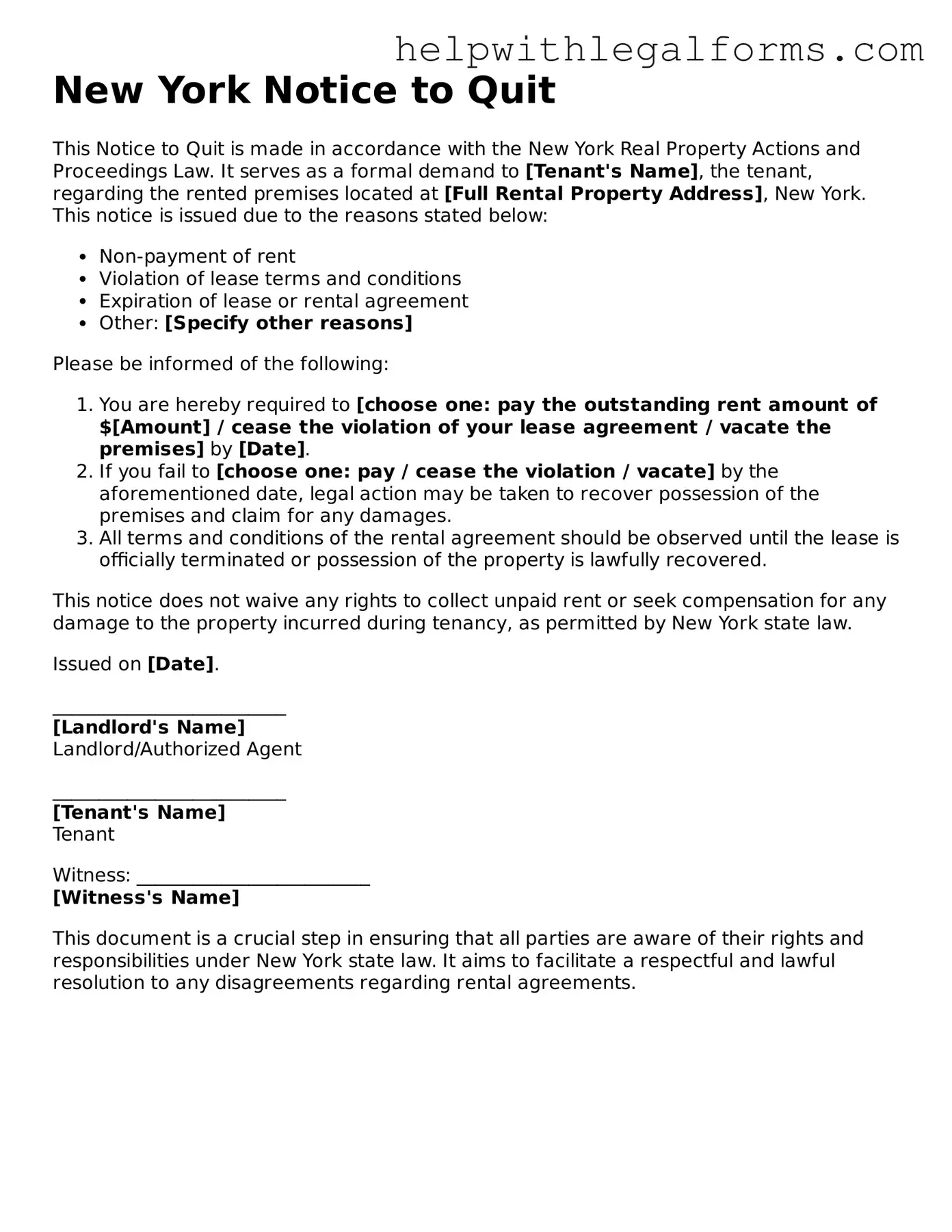What is a New York Notice to Quit form?
A Notice to Quit form in New York is a legal document that a landlord must provide to a tenant to initiate the eviction process for non-compliance with the terms of the lease agreement. This includes failing to pay rent on time, violating lease conditions, or unlawfully staying past the lease term. It serves as a formal request for the tenant to rectify the issue or vacate the premises within a specified period.
How much time does a tenant have to respond to a Notice to Quit in New York?
The amount of time given to a tenant to respond to a Notice to Quit in New York depends on the reason for the eviction. For non-payment of rent, tenants are usually given 14 days to pay or vacate. For lease violations, tenants might be given 30 days to cure the breach or leave. The specific timeframe should be clearly stated within the notice itself.
Can a tenant challenge a Notice to Quit?
Yes, tenants can challenge a Notice to Quit in New York. If a tenant believes the notice is unjust or the eviction is unwarranted, they may seek legal advice and potentially contest the eviction in court. In such cases, presenting evidence that contradicts the landlord's claim or proving compliance with the lease can be crucial for the defense.
What happens if a tenant ignores a Notice to Quit?
If a tenant ignores a Notice to Quit, the landlord can proceed with filing an eviction lawsuit, known as a summary proceeding in New York. Ignoring the notice does not halt the eviction process; instead, it likely decreases the tenant's chances of successfully challenging the eviction in court and may lead to a judgment that includes legal fees and costs against them.
Is a written Notice to Quit always required in New York?
Yes, in New York, landlords must provide a written Notice to Quit to tenants as a prerequisite for starting an eviction lawsuit. Oral notices or informal warnings are not sufficient under New York law. The written notice must clearly state the reason for the eviction and the time frame for the tenant to act.
How should a New York Notice to Quit be delivered to the tenant?
A New York Notice to Quit should be delivered to the tenant in a manner that ensures they receive it. The most common methods include personal delivery to the tenant, leaving it with someone of suitable age and discretion at the residence, or mailing it via certified or registered mail. Proper service is critical, as failure to correctly serve the notice can lead to delays or dismissal of the eviction case.
What information needs to be included in a New York Notice to Quit?
A New York Notice to Quit must contain specific information to be valid, including the tenant's name, the property address, a clear statement of the lease violation or reason for eviction, the timeframe for the tenant to remedy the situation or vacate, and the date the notice was served. Clarity and accuracy in the notice ensure the tenant fully understands the reason and the urgency of the situation.
Can a landlord evict a tenant immediately after the Notice to Quit period expires?
No, after the Notice to Quit period expires, if the tenant has not complied or vacated, the landlord cannot immediately evict the tenant. Instead, the next step is for the landlord to file an eviction lawsuit in court. Only after obtaining a court judgment can the landlord lawfully enforce the eviction, typically with the assistance of a sheriff or marshal. Direct or self-help evictions, such as changing locks or shutting off utilities, are illegal in New York.
